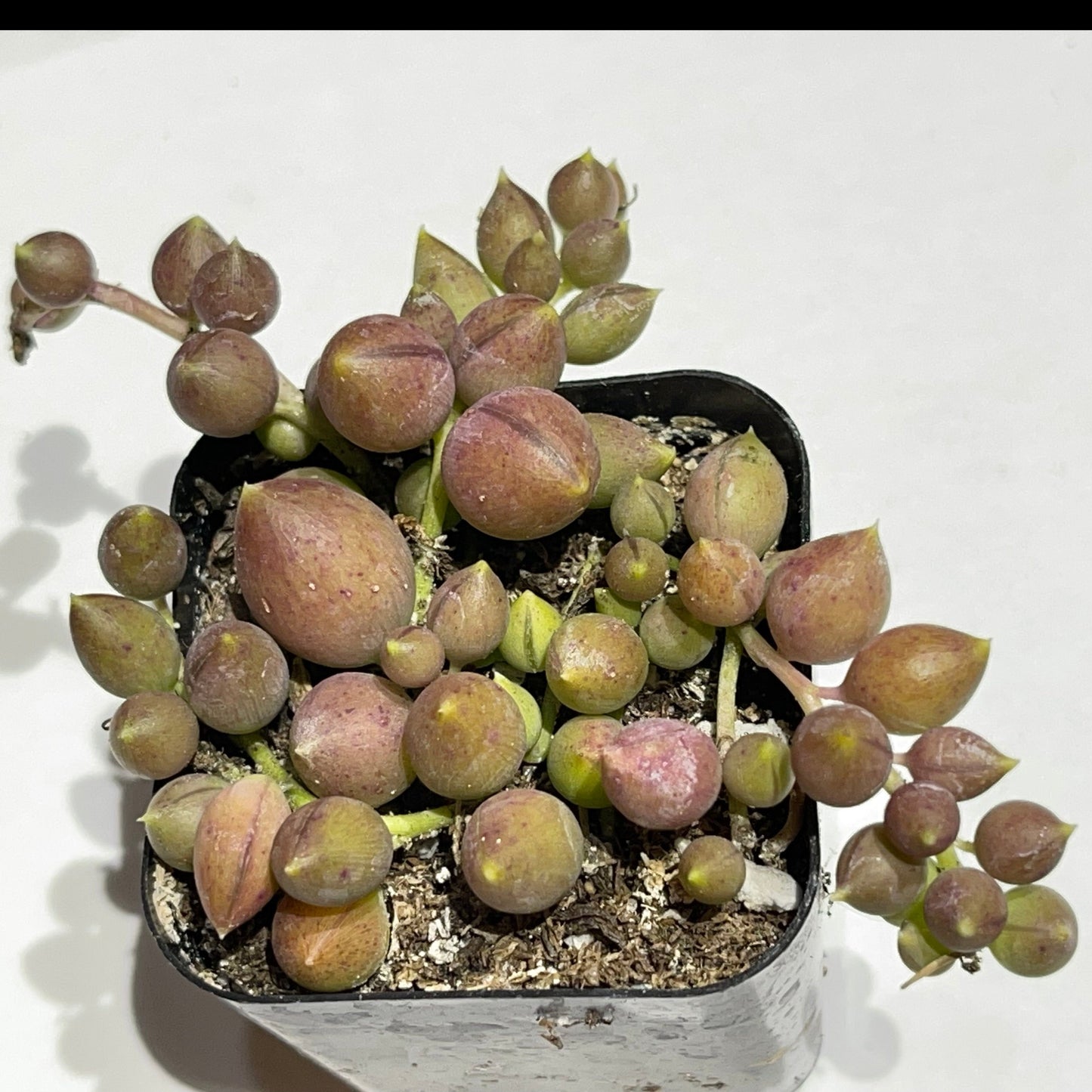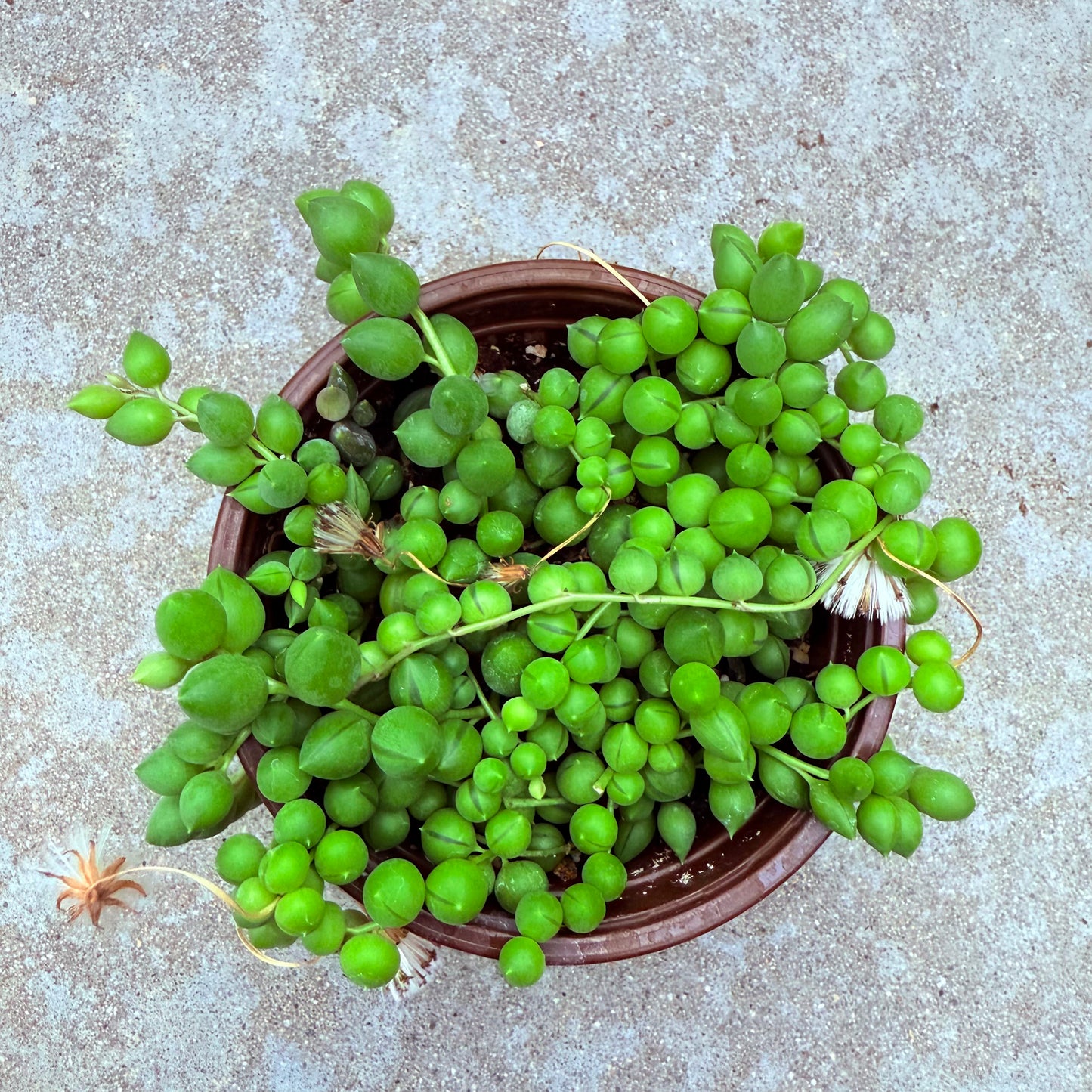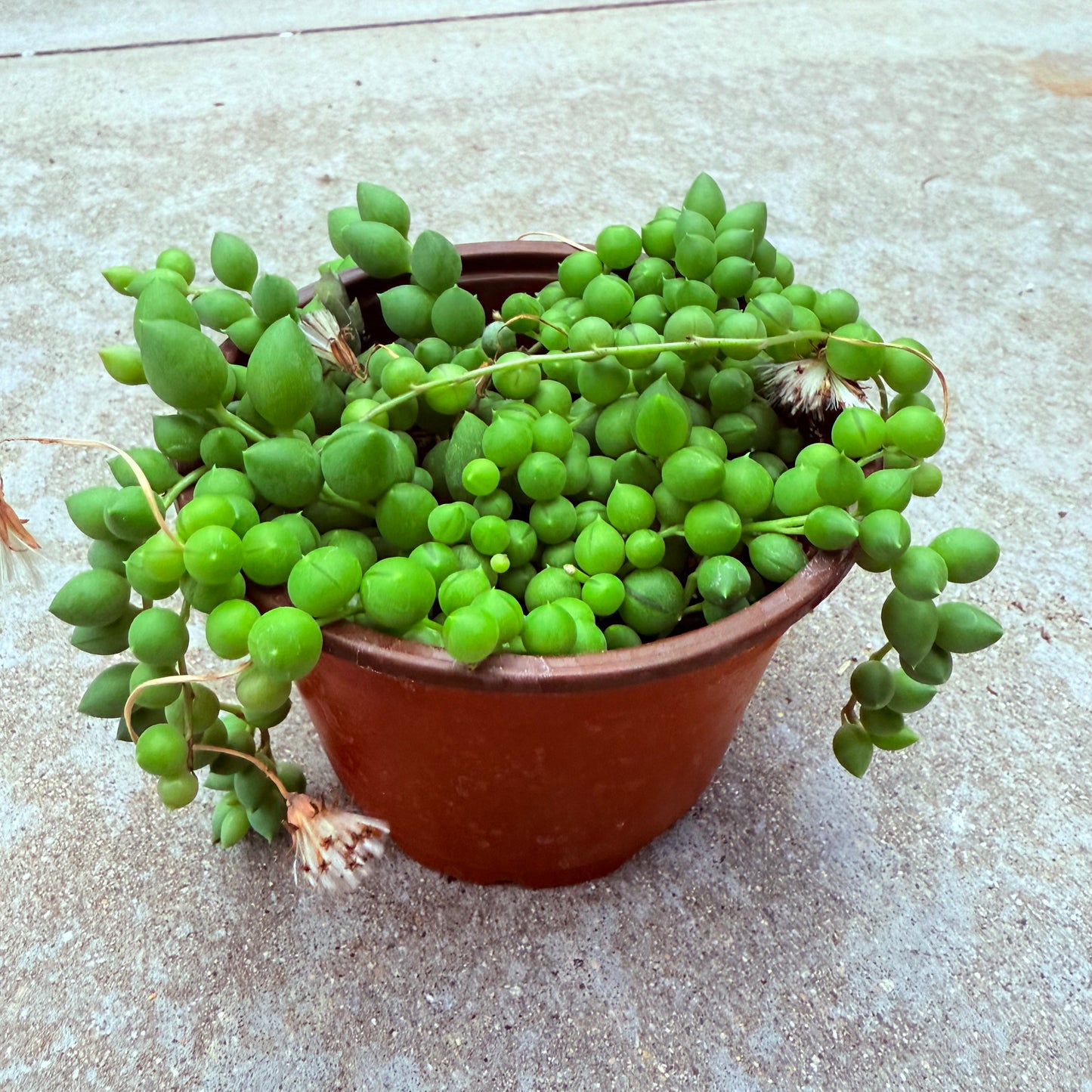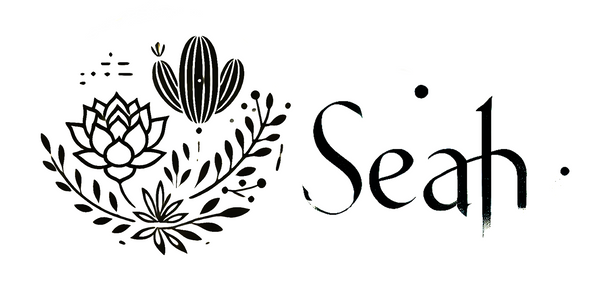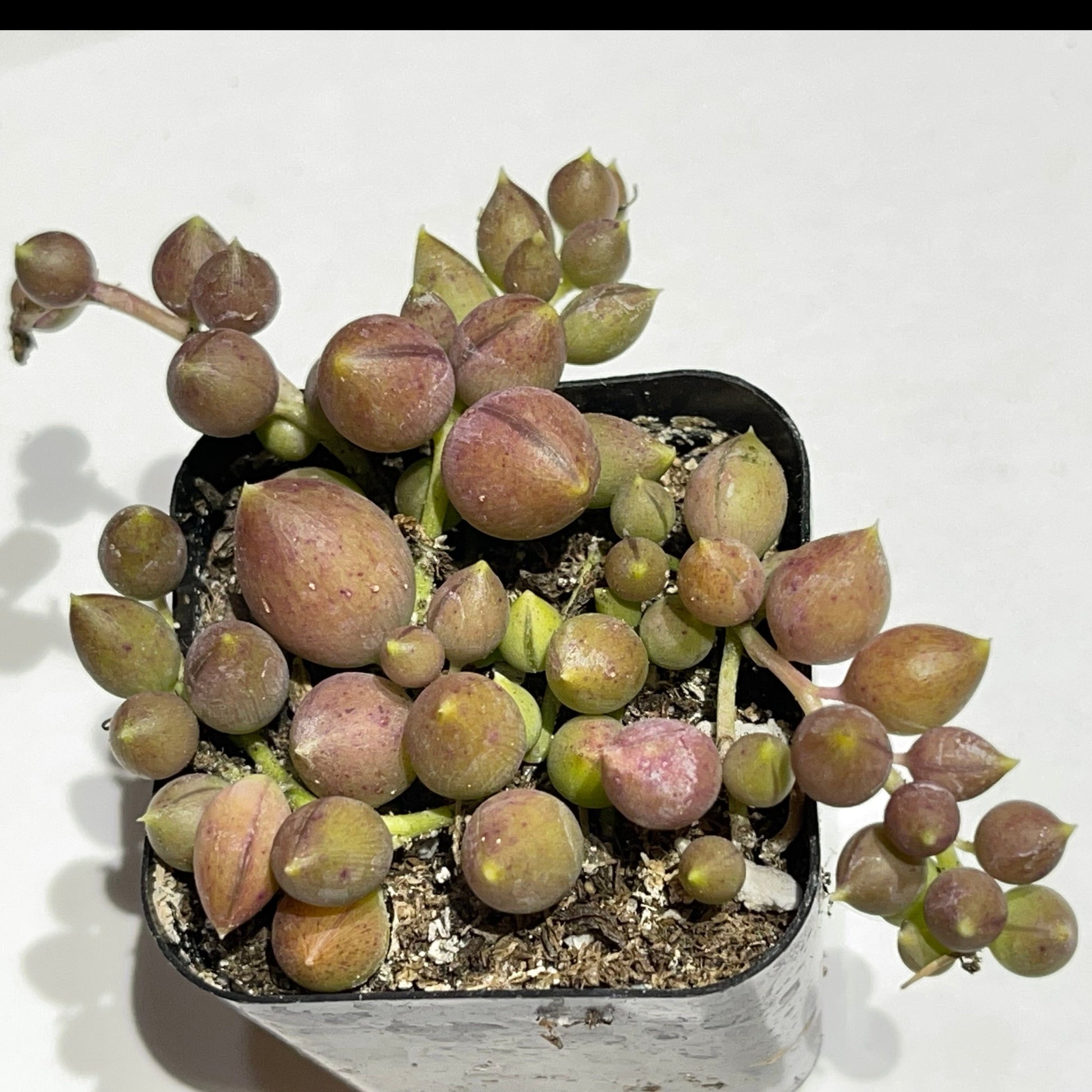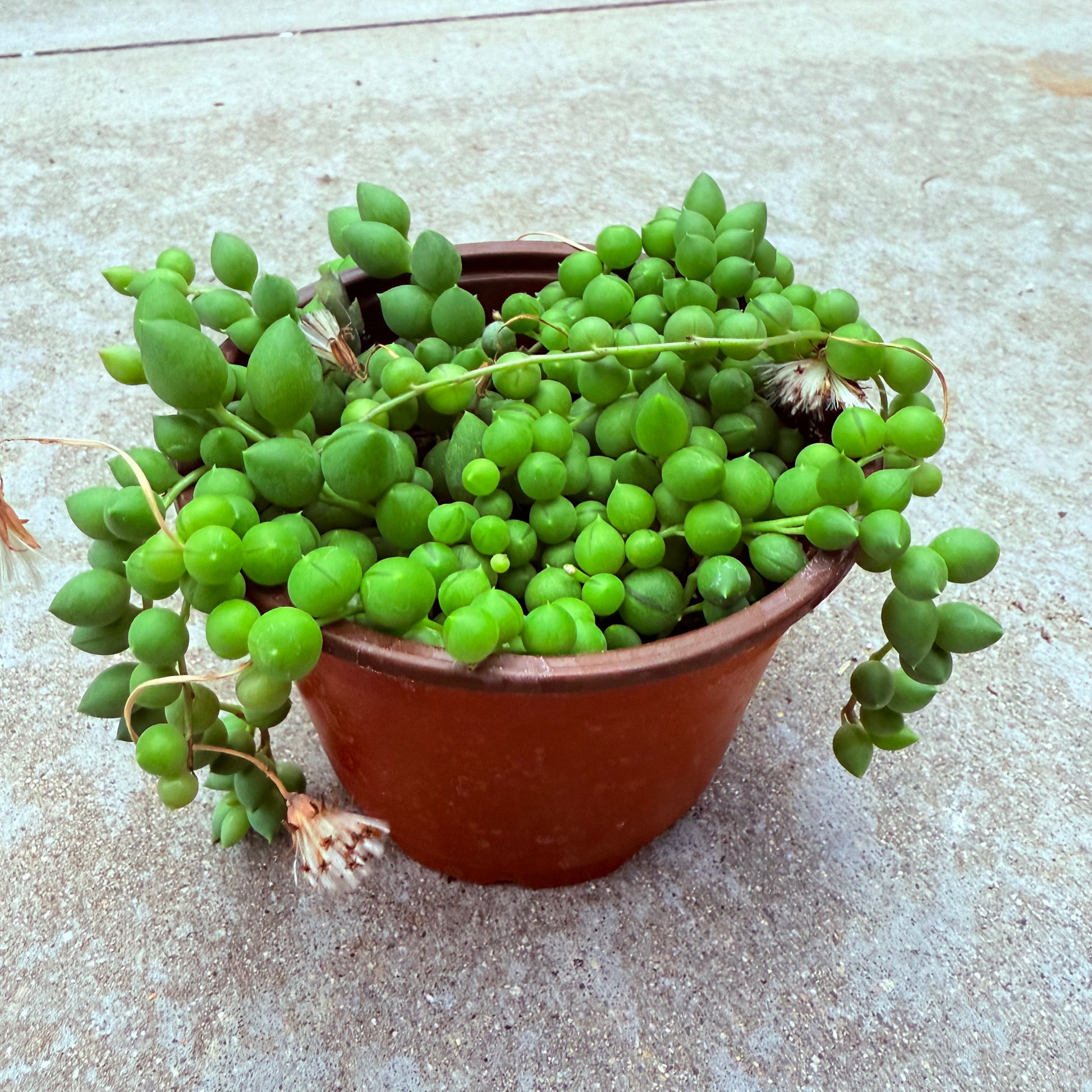Angel Tears Brocade Variegated
Angel Tears Brocade Variegated
In stock
Couldn't load pickup availability
📝 Description
The term "Angel Tears Brocade Variegated" seems to describe a plant with a unique and decorative appearance, possibly a type of variegated succulent or houseplant known for its distinctive features. Without a specific scientific name, it's challenging to provide precise details, but I'll provide information based on common characteristics of variegated succulents and plants often referred to with similar names.
Morphological Characteristics
- Leaves: Variegated plants, including those nicknamed "Angel Tears," often have leaves with multiple colors. These may include patterns of green, white, yellow, and sometimes pink. The leaves may be tear-shaped, contributing to the "tears" aspect of its name, with a brocade-like, intricate variegation pattern that gives it a unique aesthetic.
- Size: Depending on the exact species, these plants can vary widely in size but generally remain compact, making them ideal for indoor cultivation.
- Flowers: If the plant flowers, the blooms are usually small and may not be the main attraction compared to the variegated foliage.
Growth Habits
- Light: Prefers bright, indirect light to maintain its variegation. Direct sunlight might bleach the leaves, whereas too little light can cause the variegation to fade.
- Temperature: Enjoys a warm, stable environment; typical room temperatures are suitable. It's important to protect it from drafts and extreme temperature changes.
Maintenance Points
- Soil: Requires well-draining soil. A mix designed for cacti and succulents can be a good choice, ensuring proper drainage and aeration.
- Watering: Like many variegated plants, it's essential to let the soil dry out between waterings to prevent root rot. Overwatering is a common mistake.
- Fertilization: Use a balanced, diluted fertilizer during the growing season (spring and summer) to encourage growth. Reduce or stop fertilizing in the dormant winter months.
Reproduction Method
- Offsets or Pups: Many succulents and variegated plants reproduce by producing offsets or pups that can be carefully separated and replanted once they've grown large enough.
- Leaf Cuttings: Some succulents allow for propagation through leaf cuttings. A healthy leaf can be placed on soil to root and form a new plant, although this may be less effective for highly variegated varieties.
- Division: For some plants, division of the root ball during repotting can be an effective way to propagate, ensuring each new plant has a portion of the roots.
It's worth noting that variegated plants often require more light to maintain their unique coloring than their non-variegated counterparts. However, too much direct sunlight can damage the leaves. The key to caring for variegated plants like "Angel Tears Brocade Variegated" is balancing these needs to keep the plant healthy and the variegation vibrant.
🌿 Care Tips
Plant Care
Light
Water
Soil
Temperature
Hardiness
Fertilizer
Propagation: Leaf/offset cuttings
Common issues: Etiolation, mealybugs, rot
🌟 Note: It’s normal for succulents to appear slightly shriveled after shipping. They usually recover within a few days in a suitable environment.
📦 Shipping Info
Seah Shipping Policy
Effective Date: November 2025
This Shipping Policy applies to orders delivered within the continental United States (the lower 48 states). By purchasing from Seah, you agree to the terms below.
1) Shipping Cost & Free Shipping
- Automatic rate calculation: Shipping is calculated at checkout based on weight, destination ZIP and carrier rates.
- Free Standard Shipping: Orders $59+ (pre-tax, after discounts) ship free to the lower 48 states.
- Alaska, Hawaii, Puerto Rico & other territories: Not eligible for free shipping or standard flat offers at this time.
- Taxes/Duties: Applicable sales tax and any fees are shown at checkout.
2) Processing Schedule
- Business days only: We process and ship Monday–Friday. No shipping on weekends or U.S. federal holidays.
- Handling time: 1–3 business days after payment confirmation.
- Cut-off time: Orders placed before 3:00 PM (PST) are prioritized for same-day processing; others roll to the next business day.
- Changes/Cancellations: Email support@seah.co within 12 hours of purchase; after that, the order may already be in processing.
3) Transit Times
| Method | Estimated Transit | Total ETA (Handling + Transit) |
|---|---|---|
| Standard | 5–8 business days | 6–11 business days |
| Express | 3–4 business days | 4–7 business days |
ETAs are estimates. Weather, holidays, carrier delays or high-volume periods may extend delivery times.
4) Seasonal Temperature & Plant Safety
- Winter (Nov–Mar): We strongly recommend adding a heat pack at checkout to protect plants from freezing. Orders shipped without a heat pack during cold conditions are not covered for cold damage.
- Summer heat: During extreme heat waves, we may hold shipments until temperatures normalize. We’ll notify you if there’s a hold.
- Packaging: Plants are carefully packed (bare-root or potted by type/size) to minimize transit stress.
5) Carriers & Tracking
- We ship via USPS / UPS / FedEx, selected automatically for best service to your address.
- When your order ships, you’ll receive a tracking email. Tracking typically activates within 24 hours.
- If you haven’t received tracking within 3 business days, contact us at support@seah.co or +1 (626)-999-1314.
6) Address Changes & Delivery Issues
- Before shipment: Request address changes within 12 hours of ordering.
- After shipment: We can’t modify the address once dispatched. Please contact the carrier for redirection options.
- PO Boxes: Supported for USPS only; UPS/FedEx require a street address.
- Seah isn’t responsible for delays or loss due to incorrect addresses provided at checkout.
7) Service Area
We currently ship to the continental U.S. (lower 48 states). Orders to AK/HI/PR and other territories are not eligible for free shipping and may be restricted.
8) Support
- Hours: Mon–Fri, 9:00 AM – 5:00 PM (PST)
- Phone: +1 (626)-999-1314
- Email: support@seah.co
- Address: 7870 Margaux Pl, Rancho Cucamonga, CA 91739, United States
Thank you for supporting our California nursery—each plant is hand-selected and packed with care. 🌱
